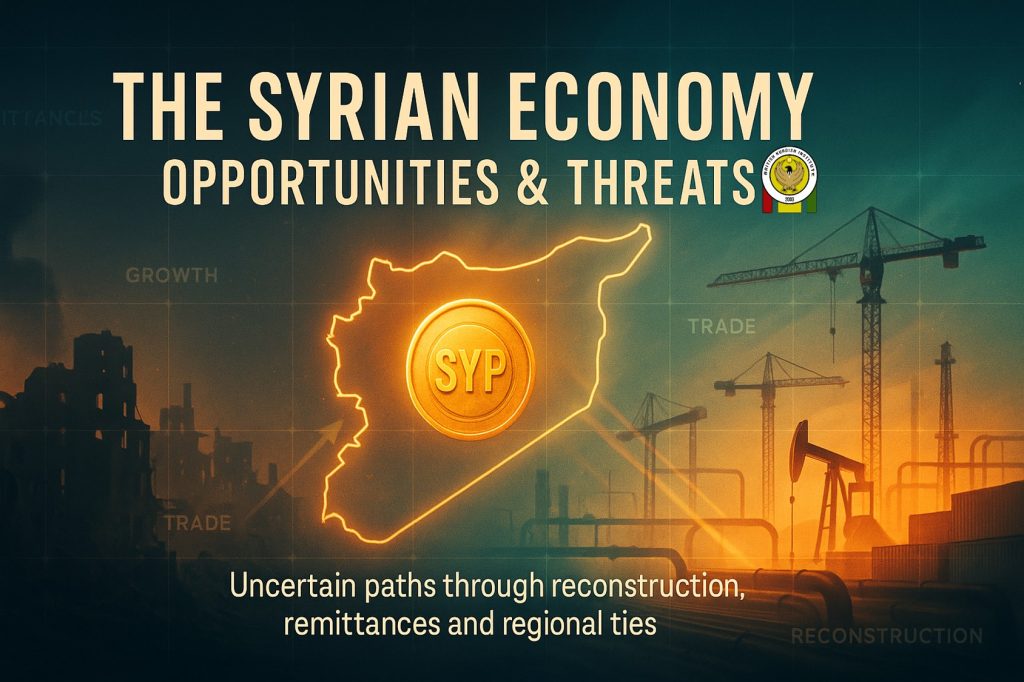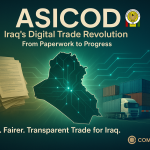Overview
Syria’s economy is entering a decisive—yet uncertain—phase. A decade of conflict has left deep structural scars, while the current leadership, led by interim President Ahmed Shara, signals a new plan for recovery. Remittances from Syrians abroad, promised Gulf investments, and revived trade with neighbors offer fresh momentum. But the gaps—weak institutions, damaged infrastructure, and a fragile currency—remain wide.
An Economy in Transition
Syria closed 2024 with roughly -1.5% growth, with international bodies projecting a modest ~1% expansion ahead. Crucially, this lift does not stem from factories or farms; it is powered by Syrians overseas who sent nearly $1 billion in six months. Headline investment pledges—$14 billion (Aug 2024) and $6 billion (Jul 2024), largely linked to Gulf sources—grab attention, yet many commitments trace back to opaque entities. As economist Dr. Masalam Talas cautions, without clear legal and institutional frameworks, such inflows risk repeating the old cycle of corruption that once paralyzed growth.
Strengths—and Deep Gaps
Syria’s strategic geography, natural resources, and resilient population are undeniable assets. Still, the reality is stark: a recent UN assessment notes widespread poverty (≈90%), unemployment above 30%, and critical infrastructure in ruins. With domestic production weak, the economy leans on remittances and informal trade—an unstable foundation vulnerable to external shocks.
Ambitions vs. Implementation
Officials have set ambitious goals: unify the currency, reform banking, reconnect to global finance, and attract capital to rebuild infrastructure. Success hinges on state capacity and public trust—two scarce commodities. External support, including salary assistance from Qatar, underscores how dependent the government remains on outside actors, raising questions about policy independence and long-term sustainability.
Politics, Security, and Investment Confidence
Economic stabilization is inseparable from security. Recent sectarian violence—especially attacks targeting Alawite and Druze communities—has shaken investor confidence. Conversely, the March understanding between the Syrian Democratic Forces (SDF) and Damascus, if enacted, could enable shared control over borders, hydrocarbons, and airports. That, in turn, could streamline resource allocation for reconstruction—though mistrust on all sides threatens delays.
Turkey’s Expanding Footprint
Turkey is now deeply enmeshed in Syria’s economic fabric—spanning infrastructure, energy, logistics, and construction. Rising Turkish exports and bilateral agreements point to tighter integration. For Syria, this is a double-edged sword: Turkish capital and know-how could jump-start rebuilding, yet heavy reliance risks crowding out other partners and ceding leverage to Ankara during reconstruction.
Iraq and the Kurdistan Region: Lifelines to Trade
The Al-Qaim–Al-Bukamal crossing has revived commerce with Baghdad, while the Semalka–Peshkhabour route sustains flows to and from the Kurdistan Region. Beyond meeting immediate needs in western Kurdistan, the Kurdistan Region could evolve into a vital export corridor and a partner in refining and transporting oil and oil products—key links for any sustained recovery.
The Lira’s Uncertain Future
The central bank aims to unify exchange rates and narrow the gap between official and parallel markets to boost confidence in the lira. Yet stabilization demands more than statements: larger FX buffers, higher export volumes, credible oversight of currency markets, and a degree of central-bank independence. Without these, volatility is likely to persist.
Bottom Line
Syria stands at a crossroads. Remittances, trade reopenings, and foreign investment could form the cornerstone of reconstruction—or be squandered by corruption and weak institutions. The outcome depends on whether new leadership breaks with entrenched practices. Genuine reform would shape not only the lira’s path but also Syria’s place on the region’s economic map for years to come.
FAQs
Q1: What is driving Syria’s short-term growth?
Mainly remittances from Syrians abroad and headline investment pledges, rather than domestic industrial or agricultural output.
Q2: Why is currency unification critical?
It reduces market distortions, narrows the official–parallel rate gap, and can restore some confidence in the lira—if paired with institutional reform and stronger exports.
Q3: How do security dynamics affect investment?
Sectarian violence undermines confidence; progress on governance and shared control of resources can unlock reconstruction capital.
Q4: What role do neighbors play?
Turkey, Iraq, and the Kurdistan Region provide trade routes, capital, and services—vital bridges for reconstruction but also sources of dependency.









